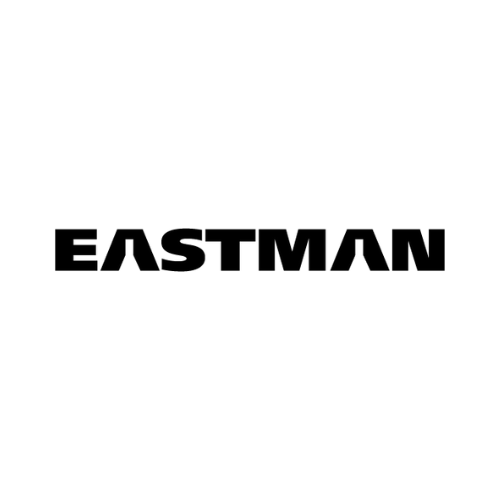Select Your Region
Water Dispersible Sulfopolyesters - AQ™ Polymers & Eastek™
 |
Water-Dispersible Polyester ResinsAromatic polyesters, like polyethylene terephthalate (PET), are some of the most commonly used materials for packaging and textiles. They are strong, durable, and relatively safe. Water-dispersible sulfopolyester resins from Eastman provide all the benefits of an aromatic polyester in a water-dispersible resin or water-based dispersion. Eastman's AQ™ sulfopolyester resins and Eastek™ sulfopolyester dispersions have all the physical properties needed to perform well in coating, ink, adhesive, and textile-sizing applications.
|
AQ™ Polymers & Eastek™
Eastman AQ™ sulfopolyester polymers, are solid, water-dispersible resins produced by polymerization using glycols and aromatic diacids. The same water-dispersible resins are available in a predispersed form under the Eastek™ trade name, allowing formulators the flexibility of working with a solid resin or water-based dispersion.
| Tg (°C) | Charge Density (meq/g) | Solid Form | Dispersion Form |
|---|---|---|---|
3
|
0.38
|
Eastman AQ™ 1950 | N/A
|
29
|
0.45
|
N/A
|
Eastek™ 1400 |
35
|
0.47
|
N/A
|
Eastek™ 1300 |
38
|
0.43
|
Eastman AQ™ 38S | Eastek™ 1000 |
48
|
0.89
|
Eastman AQ™ 48 Ultra | N/A
|
55
|
0.66
|
Eastman AQ™ 55S | Eastek™ 1100 |
63
|
0.33
|
Eastman AQ™ 65S | Eastek™ 1200 |
Formulation Considerations
When choosing a water-dispersible sulfopolyester resin, there are key physical properties to consider based on the application. The following sections provide an overview of the versatility of the AQ™ polymer and Eastek™ portfolios and the benefits they can provide.
Viscosity
The viscosity of sulfopolyester dispersions depends on the percent solids of the dispersion. Unlike solution-based polymers like PVOH and PVP, dispersions of AQ™ polymers have a relatively low viscosity, resulting in less than 100 cP up to 30% solids. Above 30% solids, the viscosity will increase rapidly with concentration, similar to latexes.
Minimum Film Forming Temperature and Drying Time
The minimum film-formation temperature of typical dispersions is usually equal to the Tg of the dispersed polymer. To reduce that temperature, a plasticizer or coalescent must be added. Sulfopolyesters are plasticized by water; therefore, the minimum film-formation temperature is about 20°C less than the Tg of the polymer. As such, sulfopolyester film formation will occur at relatively low temperatures without an additional plasticizer or coalescent. Compared to systems that may require plasticizers, such as polyurethane dispersions (PUDs) or acrylic emulsions, this feature offers formulators better cost savings. This lower film-formation temperature, coupled with the small nature of sulfopolyester polymer aggregates compared to PUDs and acrylic emulsions, lends to AQ™ polymers and Eastek™ dispersions having a very rapid drying time, which benefits coating, ink, and adhesive applications.
Tack and Flexibility
AQ™ polymers and Eastek™ dispersions range in Tg from 3°C to 63°C, which allows formulators to select the optimal sulfopolyester grade depending on the end-use requirements of each coating, ink, or adhesive application. Sulfopolyesters with a Tg over 45°C form thin, rigid films with low tack. Inversely, sulfopolyesters with a Tg less than 35°C form flexible films with moderate tack.
Water & Humidity Resistance
The water and humidity resistance of films formed by sulfopolyesters is inversely related to the charge density of the sulfopolyester polymer; low-charge-density polymers have higher resistance than high-charge-density polymers. Water resistance can also be increased or decreased by the addition of hydrophobic or hydrophilic plasticizers, respectively. Additionally, sulfopolyesters do not disperse in solutions with high ionic strength.
Gloss
Sulfopolyester dispersions have very small particle aggregates. As a result, the films formed have a very smooth and glossy appearance. If a matte appearance is desired, conventional matting agents, such as clay or silica, work well with sulfopolyesters.
Viscosity
The viscosity of sulfopolyester dispersions depends on the percent solids of the dispersion. Unlike solution-based polymers like PVOH and PVP, dispersions of AQ™ polymers have a relatively low viscosity, resulting in less than 100 cP up to 30% solids. Above 30% solids, the viscosity will increase rapidly with concentration, similar to latexes.
Minimum Film Forming Temperature and Drying Time
The minimum film-formation temperature of typical dispersions is usually equal to the Tg of the dispersed polymer. To reduce that temperature, a plasticizer or coalescent must be added. Sulfopolyesters are plasticized by water; therefore, the minimum film-formation temperature is about 20°C less than the Tg of the polymer. As such, sulfopolyester film formation will occur at relatively low temperatures without an additional plasticizer or coalescent. Compared to systems that may require plasticizers, such as polyurethane dispersions (PUDs) or acrylic emulsions, this feature offers formulators better cost savings. This lower film-formation temperature, coupled with the small nature of sulfopolyester polymer aggregates compared to PUDs and acrylic emulsions, lends to AQ™ polymers and Eastek™ dispersions having a very rapid drying time, which benefits coating, ink, and adhesive applications.
Tack and Flexibility
AQ™ polymers and Eastek™ dispersions range in Tg from 3°C to 63°C, which allows formulators to select the optimal sulfopolyester grade depending on the end-use requirements of each coating, ink, or adhesive application. Sulfopolyesters with a Tg over 45°C form thin, rigid films with low tack. Inversely, sulfopolyesters with a Tg less than 35°C form flexible films with moderate tack.
Water & Humidity Resistance
The water and humidity resistance of films formed by sulfopolyesters is inversely related to the charge density of the sulfopolyester polymer; low-charge-density polymers have higher resistance than high-charge-density polymers. Water resistance can also be increased or decreased by the addition of hydrophobic or hydrophilic plasticizers, respectively. Additionally, sulfopolyesters do not disperse in solutions with high ionic strength.
Gloss
Sulfopolyester dispersions have very small particle aggregates. As a result, the films formed have a very smooth and glossy appearance. If a matte appearance is desired, conventional matting agents, such as clay or silica, work well with sulfopolyesters.
Common Applications
Coatings & Inks
The broad Tg range of AQ™ polymers allows for formulating coatings and inks with customized flexibility and tack. Additionally, the rapid film formation of sulfopolyesters makes AQ™ polymers an ideal resin for formulators looking to increase the productivity of printing and coating operations. Eastek™ dispersions add convenience by being offered as a predispersed option.
inks with customized flexibility and tack. Additionally, the rapid film formation of sulfopolyesters makes AQ™ polymers an ideal resin for formulators looking to increase the productivity of printing and coating operations. Eastek™ dispersions add convenience by being offered as a predispersed option.
The broad Tg range of AQ™ polymers allows for formulating coatings and
 inks with customized flexibility and tack. Additionally, the rapid film formation of sulfopolyesters makes AQ™ polymers an ideal resin for formulators looking to increase the productivity of printing and coating operations. Eastek™ dispersions add convenience by being offered as a predispersed option.
inks with customized flexibility and tack. Additionally, the rapid film formation of sulfopolyesters makes AQ™ polymers an ideal resin for formulators looking to increase the productivity of printing and coating operations. Eastek™ dispersions add convenience by being offered as a predispersed option. Hot Melt Adhesive
AQ™ 1950 was designed to be used as a thermoplastic resin in repulpable hot-melt adhesives. AQ™ 1950 has a low Tg, offering good tack, flexibility, and adherence to most common packaging films and paper. AQ™ 1950 has a very high charge density, making it readily dispersible in water. This makes hot-melt adhesives formulated with AQ™ 1950 completely repulpable and provides for easier recycling of packaging materials.
AQ™ 1950 has a low Tg, offering good tack, flexibility, and adherence to most common packaging films and paper. AQ™ 1950 has a very high charge density, making it readily dispersible in water. This makes hot-melt adhesives formulated with AQ™ 1950 completely repulpable and provides for easier recycling of packaging materials.
AQ™ 1950 was designed to be used as a thermoplastic resin in repulpable hot-melt adhesives.
 AQ™ 1950 has a low Tg, offering good tack, flexibility, and adherence to most common packaging films and paper. AQ™ 1950 has a very high charge density, making it readily dispersible in water. This makes hot-melt adhesives formulated with AQ™ 1950 completely repulpable and provides for easier recycling of packaging materials.
AQ™ 1950 has a low Tg, offering good tack, flexibility, and adherence to most common packaging films and paper. AQ™ 1950 has a very high charge density, making it readily dispersible in water. This makes hot-melt adhesives formulated with AQ™ 1950 completely repulpable and provides for easier recycling of packaging materials. Textile Sizing
The smooth and flexible nature of films formed from
 lower Tg sulfopolyesters make for excellent textile sizing. Coatings made with Eastek™ 1000 and AQ™ 38S provide optimum flexibility and slip to protect yarns from the stress applied during weaving. Yarns sized with sulfopolyesters are stronger and will break or rupture less frequently, allowing for the increased productivity of weaving processes.
lower Tg sulfopolyesters make for excellent textile sizing. Coatings made with Eastek™ 1000 and AQ™ 38S provide optimum flexibility and slip to protect yarns from the stress applied during weaving. Yarns sized with sulfopolyesters are stronger and will break or rupture less frequently, allowing for the increased productivity of weaving processes. Summary
Eastman AQ™ polymers, also known as polyester-5, are sulfopolyester-based resins that provide formulators of water-based coatings, inks, adhesives, and textile sizing products with the ultimate flexibility to customize physical properties to suit each end-use application. AQ™ polymers offer a wide range of Tg, a relatively low minimum film-formation temperature, fast drying times, and good resistance to moisture and ionic solutions. For an added level of convenience, Eastman manufactures these sulfopolyester resins as a predispersed product in the Eastek™ product line.
ChemPoint is here to help you develop your application. Click below to discuss your application with us, and we'll be happy to recommend the right Eastman sulfopolyester resin for you.

Thank you
Thank you for your inquiry and interest in ChemPoint.
We will respond to you shortly.
ChemPoint will not under any circumstances release personal user information to individuals or companies. All information collection is solely used to support ChemPoint customers service communications. Read our Privacy Notice.
Are you in the correct region?
We’ve detected that you are located in a different region than the region selected on the website. Would you like to change your region?
Current Region: English - United States